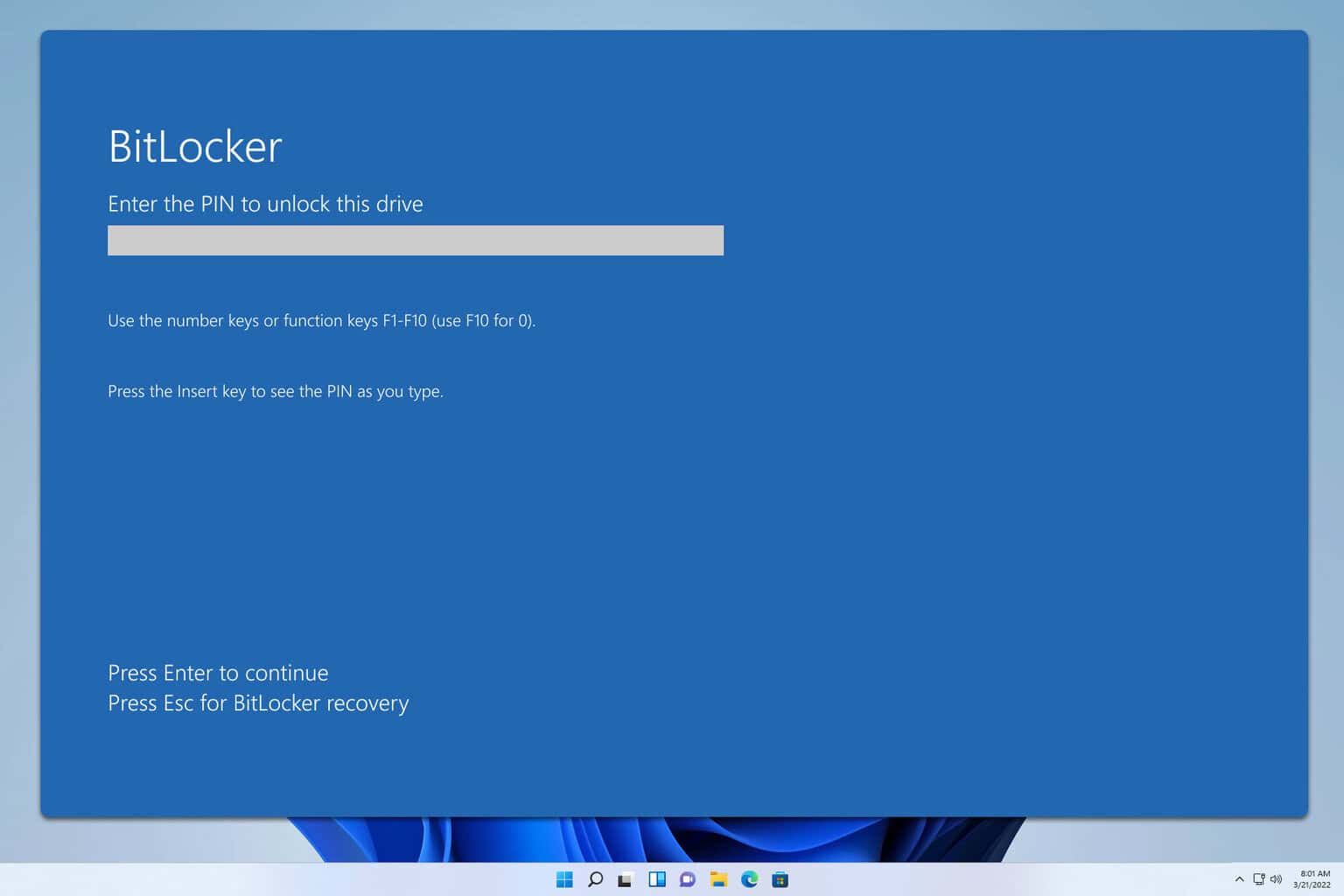ERROR_INVALID_HW_PROFILE: Fix this BSOD in 7 Steps
First, ensure Windows is updated to the latest version
6 min. read
Published on
Read our disclosure page to find out how can you help Windows Report sustain the editorial team. Read more

The ERROR_INVALID_HW_PROFILE 619 (0x26B) with error message The specified hardware profile configuration is invalid, usually appears if there is an issue with hardware profile configuration in Windows, specifically when a device is trying to load or use an invalid or corrupted hardware profile.
How can I fix ERROR_INVALID_HW_PROFILE?
1. Check for Windows updates
- Press Windows + I to open the Settings app.
- Select Windows Update from the left pane, and click Check for updates.

- If there is an update available, click Download & Install to get the latest updates.
2. Update/reinstall the device driver
- Press Windows + R to open the Run window.
- Type devmgmt.msc and click OK to open the Device Manager app.
- From the list of system components, click and expand each category one by one to look for problematic drivers.
- Once located, right-click it and select Update driver from the context menu.
- Click Search automatically for drivers.
If you find multiple problematic drivers, follow the same steps. If Windows fails to find the best version, download and install the driver from the manufacturer’s website. Alternatively, you can download a third-party driver updater tool and run it to update all the device drivers at once.
If updating the drivers doesn’t fix the ERROR_INVALID_HW_PROFILE BSoD error, try reinstalling the driver using the following steps:
- Open the Device Manager app, locate the problematic driver, right-click, and choose Uninstall device from the context menu.
- Navigate to Action and select Scan for hardware changes from the drop-down menu to reinstall the driver.a
3. Modify or delete invalid hardware profile
- Press Windows + R to open the Run window.
- Type devmgmt.msc and click OK to open the Device Manager app.
- Go to View, then select Show hidden devices.
- Locate Non-Plug and Play Drivers or Network adapters, then look for any grayed-out entries.
- Right-click them and choose Uninstall.
- If you wish to reinstall, go to Action and select Scan for hardware changes from the drop-down menu to reinstall the driver.
4. Run SFC & DISM scans
- Press the Windows key, type cmd in the search box, and click Run as administrator from the list of options to launch the Command Prompt with elevated rights.
- Copy & paste the following command to repair corrupted files and hit Enter:
sfc /scannow - Wait until the scan is complete, type the following command to repair the Windows system image via Windows Update, then press Enter after every command:
DISM /Online /Cleanup-Image /CheckHealth
DISM /Online /Cleanup-Image /ScanHealth
DISM /Online /Cleanup-Image /RestoreHealth
- Once the scan is executed successfully, restart your PC to let the changes take effect.
5. Reset the BIOS/UEFI settings
- Press Windows + I to open the Settings app.
- Go to System, then click Recovery.
- Under Recovery options, locate Advanced startup, and click Restart now.
- On the Choose an option screen, select Troubleshoot.
- From the Troubleshoot screen, choose Advanced options.
- Select UEFI Firmware Settings from the Advanced options screen.
- Click Restart.
- Once your computer boots up, you will enter BIOS mode; use the arrow keys on your keyboard to navigate.
- Look for the Load Defaults, Restore Defaults, or Reset to Default option and select it. Then, press F10 or a similar option to save and exit the BIOS mode.
6. Restore your PC to a previous system point
- Press Windows + R to open the Run window.
- Type sysdm.cpl and click OK to open the System Configuration window.
- Go to the System Protection tab and click the System Restore button.
- Select Choose a different restore point in the System Restore window and click Next.
- Select a restore point from the list of available points created before encountering the ERROR_INVALID_HW_PROFILE error, then click Next.
- Click Finish to initiate the process.
Windows will restart and restore the system settings to the selected point. If you see the System Restore is not working error after restart, it could happen due to corrupt system files, antivirus, or power failure.
7. Reinstall Windows (Last resort)
 NOTE
NOTE
Create an installation media
- Open the Windows 11 download website on another PC, locate Create Windows 11 Installation media, then click Download Now.
- The mediacreation.exe file will be downloaded. Double-click to launch it and click Yes on the UAC prompt.
- The Windows 11 Setup wizard will open, and click Accept to agree to the license terms and agreements.
- Choose the language, edition, and architecture, then click Next.
- Plug in the flash drive, and on the Choose which media to use screen, select the USB flash device option and click Next.
- On the Select a USB flash drive page, you will see the USB drive you connected. If you can’t see it, click Refresh drive list, ensure the flash drive is listed, and click Next.
- Follow the onscreen instructions to complete, then click Finish, and remove the USB device safely from the computer.
Reinstall Windows
- Insert the flash drive into the affected computer, and press Windows + E to open the File Explorer window.
- Open the USB drive’s folder, locate and double-click the setup.exe file, and click Yes at the UAC prompt.
- Select Change and choose any of these options as per your preference:
- Keep personal files and apps – Preserves personal data, apps & settings
- Keep personal files only – Saves data & settings, but apps are deleted
- Keep nothing – Removes all the settings, data, and apps.
- On the next screen, click the Install button to start reinstalling Windows 11 on your computer, which will fix the ERROR_INVALID_HW_PROFILE BSoD error once and for all.
Reinstalling Windows can fix all the other BSoD errors like ERROR_INTERMIXED_KERNEL_EA_OPERATION 324 (0x144), but it should be considered as a last resort.
While Windows is installed on your computer, your device may restart several times, so keep it plugged into a power source or on charge if it is a laptop. Once complete, Windows will restart and take you to the login screen. Log in to your user account and use the steps from Method 4 to update Windows to the latest version and customize the system settings per your preferences.
In conclusion, to get rid of the ERROR_INVALID_HW_PROFILE BSoD error, you can update the device driver, reset the BIOS settings, update Windows to the latest version, delete an invalid hardware profile, run SFC and DISM scans, or reinstall Windows.
If you have any questions or suggestions about the error, feel free to mention them in the comments section below.





























User forum
0 messages